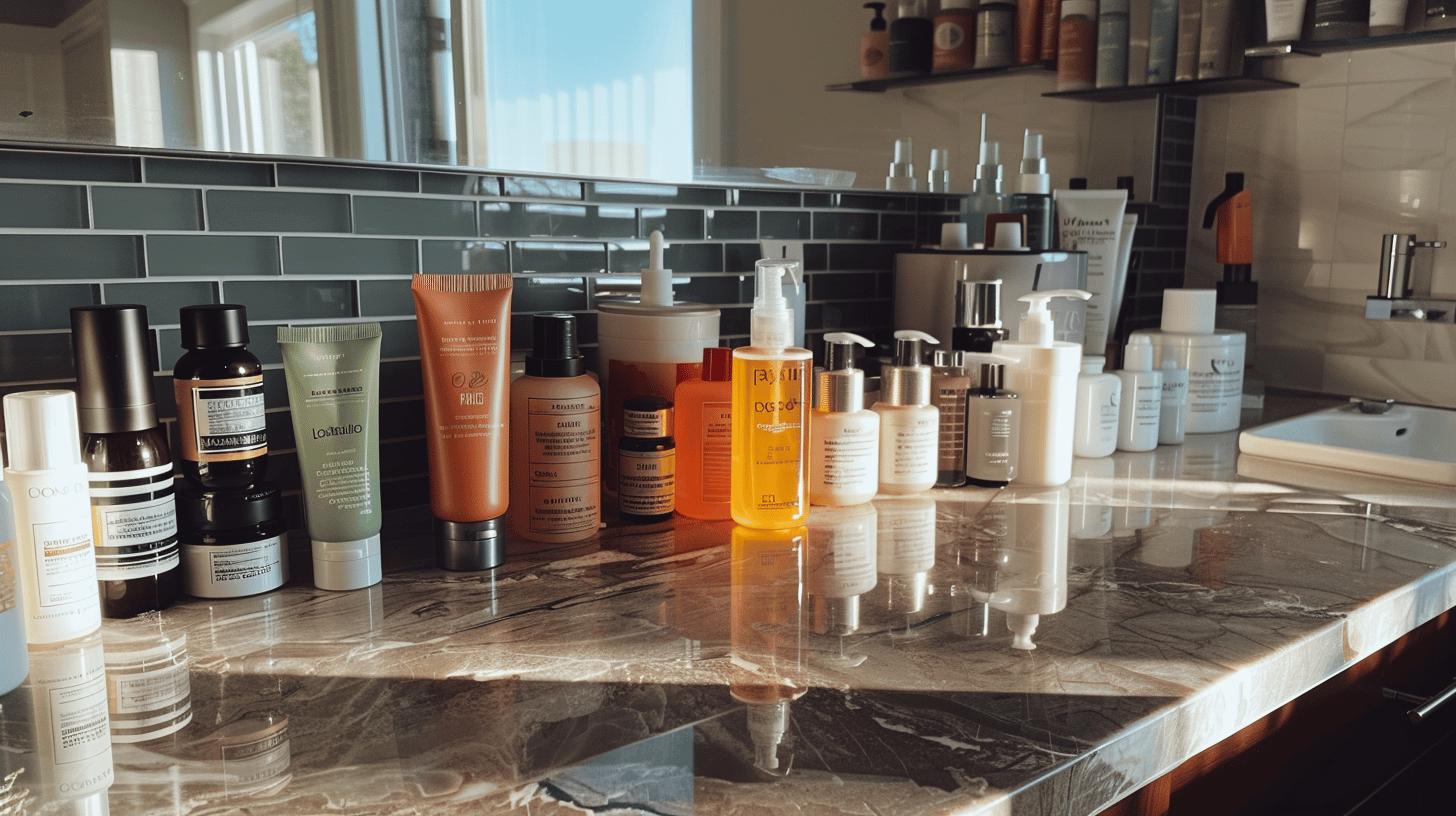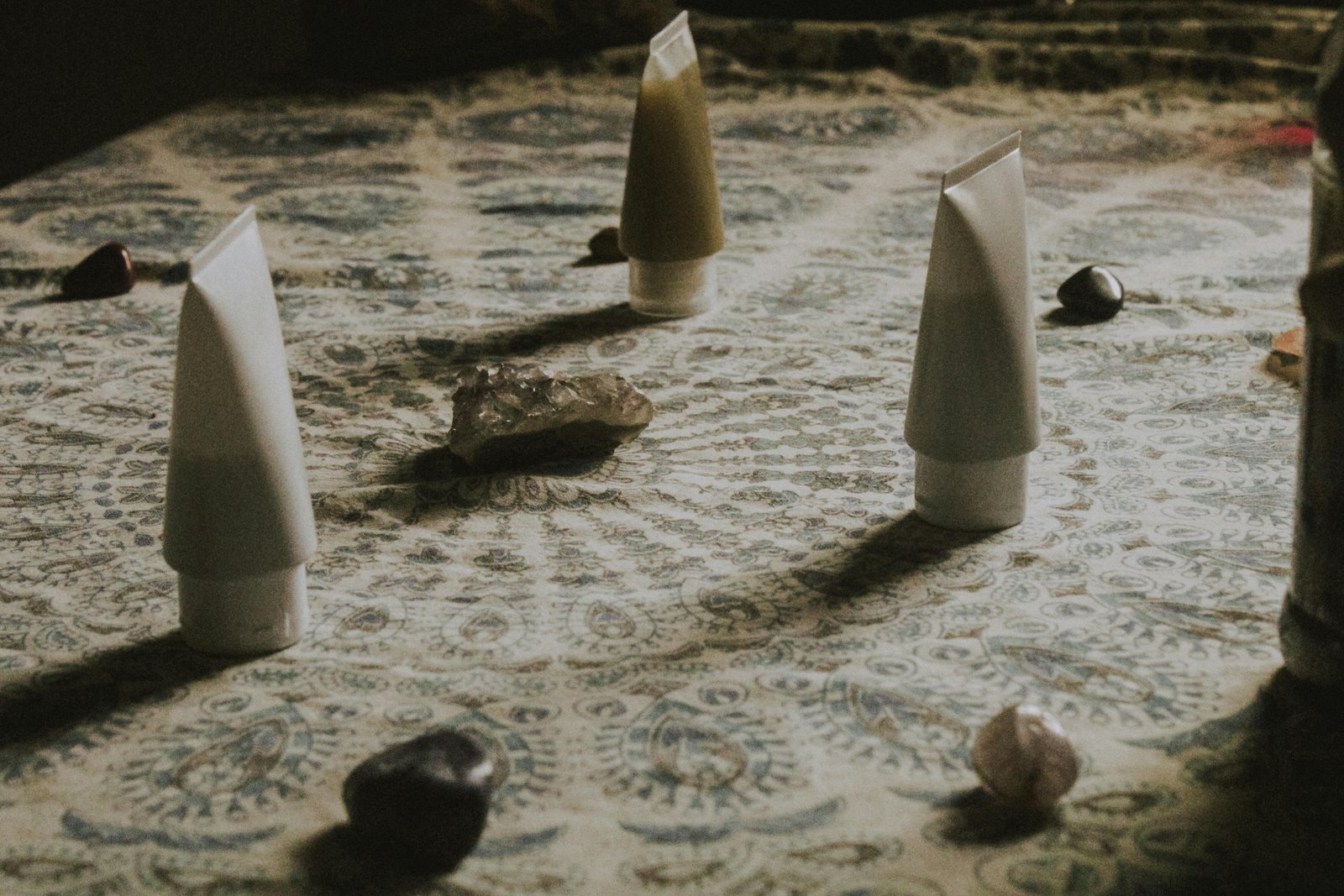Best Antibacterial Creams for Tattoo Aftercare: Heal, Protect, and Keep Your Ink Looking Fresh
Think your tattoo’s done once the artist wipes away the ink? Not quite. The real healing starts the moment you leave the studio, and choosing the right antibacterial cream for tattoo recovery can mean the difference between a smooth heal or a red, itchy mess. The best antibacterial cream for tattoos does more than just protect—it supports your skin while it seals in that fresh design. With so many ointment options claiming to be perfect for tattoo aftercare, it’s easy to grab whatever’s closest. But not all creams are created equal. This guide rounds up the top picks proven to help your new tattoo heal clean and fuss-free.
Best Antibacterial Cream for Tattoo Healing: Top Products Reviewed

A fresh tattoo is essentially an open wound. Without proper care, it can become dry, itchy, or worse—infected. Using an antibacterial cream for tattoo aftercare helps prevent tattoo infection while supporting the skin’s natural healing process.
The best antibacterial cream for tattoos should do three things well: protect against bacteria, moisturize your tattooed skin, and soothe inflammation. Avoid anything with alcohol or strong fragrance, as these can delay the healing process or cause an allergic reaction. A good tattoo aftercare cream or ointment will be breathable, gentle on sensitive skin, and free from ingredients that clog pores.
Here are six of the most recommended tattoo aftercare products used by tattoo artists and clients alike:
- Bacitracin – A reliable antibacterial ointment with a single antibiotic agent. Low risk of allergic reaction, ideal for preventing infection in the early healing stage.
- Bepanthen Tattoo Intense Care Ointment – Contains dexpanthenol (pro-vitamin B5) to hydrate and support cell regeneration. Widely recommended by tattoo artists across the UK.
- A&D Ointment – A petrolatum-based healing ointment with added vitamins A and D. Not an antibiotic, but locks in moisture to soothe irritated or dry tattooed skin.
- Tattoo Goo – Made with olive oil, beeswax, and lavender. Acts as a natural antiseptic and antibacterial balm. Suitable for clients looking for fragrance-free, natural options.
- Hustle Butter Deluxe – Vegan and petroleum-free. Contains shea butter, coconut oil, and mango butter. Softens the skin and makes tattoos heal faster without clogging pores.
- Aquaphor Healing Ointment – Widely used alternative to petroleum jelly. Helps moisturize your tattoo while creating a breathable barrier to protect from bacteria.
Product Main Ingredients Key Benefits Bacitracin Single antibiotic Low allergy risk Bepanthen Dexpanthenol (B5) Hydration & regeneration A&D Ointment Petrolatum, vitamins A & D Moisture retention Tattoo Goo Lavender oil, beeswax Natural antibacterial Hustle Butter Shea butter, coconut oil Vegan, non-petroleum Aquaphor Petrolatum, panthenol Breathable barrier In the UK, most of these tattoo creams and ointments are available at Boots, Superdrug, Amazon, and local pharmacies. Prices typically range from £3 to £12 depending on size and brand. Multipacks or larger tubes often offer better value, especially for larger tattoos or multiple sessions.
Ingredients to Look For (And Avoid) in Tattoo Aftercare Creams

What goes into your tattoo aftercare cream matters just as much as how often you apply it. The wrong ingredient can slow the healing process, trigger a rash, or even cause infection. When choosing an antibacterial cream for tattoo healing, it’s essential to understand the label and know what your skin really needs—especially when you’ve got a fresh tattoo that’s still open and vulnerable.
| Ingredient | Use/Warning |
|---|---|
| Bacitracin | Trusted antibacterial ointment for preventing early infection. Found in many triple antibiotic ointment options. |
| Dexpanthenol (B5) | Supports wound healing and hydrates skin. Key ingredient in bepanthen tattoo intense care ointment. |
| Tea Tree Oil | Natural antiseptic and antibacterial. Soothes itching and helps prevent tattoo infection. |
| Chlorhexidine | Strong antiseptic. Effective for cleansing but may irritate sensitive skin if overused. |
| Lanolin | Can clog pores and cause allergic reaction in some users. Avoid during early healing. |
| Petrolatum | Locks in moisture but may trap bacteria if used too early. Better suited for later stages or when tattoo is no longer weeping. |
| Fragrance | Often causes irritation or rash. Stick to fragrance-free tattoo aftercare products, especially for sensitive skin. |
More people are turning to natural ingredients when choosing a tattoo lotion or ointment. Products like hustle butter deluxe and tattoo goo use plant-based oils like shea butter, aloe vera, and grape seed oil. These are gentle on tattooed skin and offer antiseptic and antibacterial support without harsh chemicals. They’re breathable, rich in vitamins, and less likely to cause allergic reactions—making them a growing favourite for people with sensitive skin or vegan skincare preferences.
How to Use Antibacterial Cream on a New Tattoo: Step-by-Step Guide

Technique matters when applying an antibacterial ointment to a new tattoo. Applying too much, or using the wrong method, can clog pores, delay the healing process, or even lead to infections. The goal is to keep your tattooed skin clean, hydrated, and protected without suffocating it. Follow these practical steps to help your tattoos heal properly and reduce the risk of tattoo infection.
How to use antibacterial cream on tattoo:
- Wash your hands thoroughly
Before touching your fresh tattoo, clean your hands with soap and water. Dirty hands are one of the most common ways bacteria gets introduced to a healing wound. - Clean the tattoo gently
Use fragrance-free, mild soap and water to clean the area. Avoid scrubbing. Pat it dry with a clean paper towel—don’t rub or use cloth towels, which can carry bacteria. - Let the tattoo breathe for a few minutes
After washing, allow the area to air dry fully. This helps avoid trapping moisture under the ointment, which can cause infection or slow recovery. - Apply a thin layer of antibacterial cream
Use a small amount of your antibacterial ointment or tattoo aftercare cream. Products like bepanthen tattoo intense care ointment, tattoo goo, or hustle butter deluxe are common choices. Spread gently—don’t cake it on. - Reapply 2–3 times daily
Repeat the cleaning and application process 2–3 times a day for the first 3–5 days. Using too much tattoo cream or applying too often can clog pores and irritate sensitive skin. - Keep the area clean and avoid tight clothing
Let your tattooed skin breathe. Wear loose clothing and avoid anything that rubs or traps sweat.How long to use antibacterial cream on tattoo:
Use an antibacterial cream for the first 3 to 5 days after getting tattooed. Once the tattooed skin begins to flake or scab, switch to a moisturizing lotion or tattoo moisturizer. Look for one that’s fragrance-free, breathable, and made for tattoo aftercare—such as a tattoo lotion with aloe vera, shea butter, or panthenol (B5). This helps moisturize your tattoo without irritating it, supporting the skin as it finishes healing.
Tattoo Infections: When and Why to Use Antibiotic Cream for Tattoo Healing

When should you use an antibiotic cream for tattoo infection?
Answer: Use an antibiotic cream when signs of infection appear—such as redness, increased pain, pus, swelling, or a warm sensation around the tattooed skin. These are early symptoms that your fresh tattoo may not be healing properly and could be developing an infection.
Tattoo infections can happen when bacteria enter through the open wound during healing. Even with the best tattoo aftercare, things like contaminated surfaces, over-handling, or not following aftercare instructions closely can introduce bacteria. Mild infections may be managed with a topical antibiotic ointment, but deep, spreading, or worsening symptoms may require oral antibiotics prescribed by a doctor.
When to use antibacterial cream on tattoo?
Answer: Apply a suitable antibacterial cream during the first 3–5 days after getting a tattoo to prevent infection. If early signs of infection appear, switch to an antibiotic cream.
Mild cases can respond well to topical products. These ointments help prevent tattoo infection without delaying the healing process. They are often used when the tattoo is still in the weeping phase and before scabs begin to form. If you experience increased itching, rash, or blistering, stop use and talk to your tattoo artist or see your doctor.
Recommended topical antibiotic creams for tattoo infection:
- Bacitracin – A single-antibiotic ointment often used in tattoo care. Low risk of allergic reaction.
- Ink Nurse Healing Cream – Specifically made for tattoos, with antiseptic and antibacterial properties.
- Triple Antibiotic Ointment – Combines bacitracin, neomycin, and polymyxin B. Effective but higher risk of allergic reaction.
- Savlon Antiseptic Cream – Contains chlorhexidine and is suitable for minor wounds and skin infections.
- Fucidin (fusidic acid) – Prescription-only in the UK, used for bacterial skin infections. May be advised by a healthcare professional.
If infected tattoo symptoms worsen—such as spreading redness, fever, or increasing pain—or if your tattoo begins to leak yellow or green pus, see your doctor. The NHS advises seeking medical help for prolonged or severe infections, especially if oral antibiotics like amoxicillin may be necessary.
Is Neosporin Safe? Common Mistakes with Antibacterial Creams for Tattoos

Can you put antibacterial ointment on a tattoo?
Answer: You can, but not all antibacterial ointments are safe for tattoos. Some, like Neosporin, can do more harm than good.
Neosporin is a triple antibiotic ointment that contains neomycin, bacitracin, and polymyxin B. While it’s effective for treating minor wounds, it’s not designed for tattoo aftercare. Using Neosporin on a new tattoo can cause dryness, allergic reactions, and even affect how your tattoo ink settles into the skin. The ointment can create a thick barrier that traps moisture and bacteria, which may cause infection or delay how your tattoo heals.
Common side effects of using the wrong antibacterial cream on tattoos:
- Allergic reaction – Neomycin can trigger redness, rash, or blistering, especially on sensitive skin.
- Ink fading – The thick ointment may interfere with tattoo ink retention during the healing process.
- Trapped bacteria – Occlusive creams like petroleum-heavy formulas can trap dirt and sweat, which may lead to infections.
- Delayed healing – Over-moisturising or suffocating tattooed skin can delay the healing process and increase scabbing.
Safer alternatives to Neosporin for tattoo healing:
- Bacitracin – A single-antibiotic ointment with fewer allergens. Helps prevent infection without affecting how your tattoo heals.
- Bepanthen Tattoo Intense Care Ointment – Contains panthenol (B5) to support wound healing and moisturize your tattoo. Widely used in UK tattoo parlors.
- Tattoo Goo – A natural tattoo balm made with grape seed oil and aloe vera. Acts as an antiseptic and antibacterial while remaining breathable.
For tattoo aftercare, always use a fragrance-free, breathable tattoo aftercare cream or lotion. If you’re unsure, talk to your tattoo artist or see your doctor before applying any antibiotic ointment to tattooed skin.
Bepanthen for Tattoo Aftercare: Benefits, Reviews, and Comparisons

What is in Bepanthen and how does it help with tattoo healing?
Answer: Bepanthen contains dexpanthenol (pro-vitamin B5), which supports wound healing, hydrates tattooed skin, and reduces itching.
When used on a fresh tattoo, Bepanthen helps moisturize your tattoo without clogging pores. The active ingredient, dexpanthenol, converts to pantothenic acid in the skin, which aids in cell regeneration and promotes faster healing. Its antiinflammatory and emollient effects make it especially suitable for sensitive skin, helping to prevent scabs and keeping the tattoo moisturized during the fragile early days. It’s widely used in tattoo parlors across the UK and often recommended by professional tattoo artists.
Is Bepanthen a good antibacterial cream for tattoos?
Answer: While Bepanthen is not an antibiotic ointment, it does create a breathable barrier that protects against dirt and friction, helping to prevent infection.
Its petrolatum-free formula is designed to be gentle and non-irritating, making it a popular choice for those seeking a tattoo aftercare cream that won’t trigger an allergic reaction or delay the healing process. It’s considered one of the best tattoo aftercare options for daily use.
Bepanthen Cream vs Ointment
The main difference between the two lies in consistency and intended use.
- Bepanthen Cream – Lighter texture, absorbs quickly. Best for later stages of healing or as a tattoo moisturizer once scabbing has settled.
- Bepanthen Ointment – Thicker, more protective layer. Ideal for the first few days after getting a tattoo when the skin is still raw and vulnerable.
The ointment contains more oil-based ingredients, making it better at sealing in moisture during the initial phase. The cream, on the other hand, is often preferred as a daily lotion for old tattoos or during tattoo dry healing when excess moisture is no longer needed.User Reviews and Comparisons
What do users say about Bepanthen tattoo cream?
Answer: UK users consistently rate it highly for its ability to soothe irritation and reduce itching during the healing process.
According to bepanthen tattoo cream reviews, many people find it more comfortable than petroleum-heavy products like petroleum jelly. It spreads easily, doesn’t stain clothes, and doesn’t leave a greasy residue. Compared to Aquaphor and Tattoo Goo, Bepanthen is often favoured for its simplicity and lack of added fragrance or oils that may cause infection or trigger a rash.
It’s also praised for being widely available in UK pharmacies and supermarkets, making it easy to find quality tattoo aftercare products without needing a special order.
Tattoo Aftercare Steps: Cream, Lotion, and What to Avoid

Looking after a new tattoo goes beyond just slapping on a cream and hoping for the best. A proper aftercare routine keeps your tattooed skin healthy, supports wound healing, and helps your ink settle cleanly. The first stage of tattoo aftercare lasts around 3 to 5 days. During this time, the skin is still open and vulnerable, so antibacterial ointment is used to prevent infection and keep the area clean. After that, the focus shifts to moisturising and protecting the area as it starts to scab and peel.
Getting the steps right can mean the difference between a tattoo that heals properly and one that ends up faded, scarred, or infected.
7 Tattoo Care Dos and Don’ts
- Clean your tattoo gently with soap and water
Use lukewarm water and a fragrance-free cleanser. Rinse off excess plasma or blood without scrubbing. - Pat dry with a clean paper towel
Cloth towels can carry bacteria and fibres that may stick to the tattoo. - Apply a thin layer of antibacterial tattoo aftercare cream
Products like bepanthen tattoo intense care ointment or hustle butter deluxe can soothe and protect without clogging pores. - Reapply cream 2–3 times daily for the first few days
Do not overdo it—too much ointment can lead to infections or delay the healing process. - Avoid tight clothing that rubs or traps sweat
Let the tattooed skin breathe. Friction can irritate the area and remove scabs prematurely. - Stay away from swimming, saunas, and sun exposure
These can introduce bacteria or cause infection, especially during the early healing stage. - Use a fragrance-free tattoo lotion after the initial healing stage
Once the tattoo starts to scab and peel, switch from ointment to a moisturising lotion or tattoo moisturizer to keep your tattoo hydrated.
After around day five, most tattoos begin to scab or flake. This is when you should stop using antibacterial ointment and start using a fragrance-free, breathable tattoo lotion. Look for ingredients like aloe vera, panthenol (B5), or shea butter that hydrate without causing a rash or allergic reaction. Products like tattoo goo, aquaphor, or a dedicated tattoo balm can be used to moisturize your tattoo and soothe itching without disrupting the healing process.
Where to Buy the Best Tattoo Creams in the UK (On a Budget Too)

Looking for the best place to buy tattoo cream UK wide? Whether you’re prepping for a fresh tattoo or stocking up on tattoo aftercare products after your last session, local shops and online retailers carry trusted names like bepanthen tattoo intense care ointment, tattoo goo, and savlon. These tattoo creams help prevent infection, moisturize your tattoo, and support the healing process—without breaking the bank.
| Retailer | Product | Price Range | Notes |
|---|---|---|---|
| Boots | Bepanthen, Savlon | £3–£9 | Wide *tattoo aftercare* range; *fragrance-free* options |
| Tesco | Sudocrem, Savlon | £2.50–£8 | Basic creams for *minor wounds* and *tattoo care* |
| Amazon UK | Bepanthen, Hustle Butter Deluxe, Tattoo Goo | £4–£12 | Multi-pack deals; quick delivery |
| Superdrug | Tattoo Goo, Aquaphor | £3.50–£10 | Good *tattoo balm* and *moisturizing lotion* choices |
To get the *best budget tattoo cream UK*, check for bundle offers or larger tubes online through Amazon or Superdrug. In-store promos at Boots and Tesco can also save money if you’re buying *tattoo aftercare cream* for multiple sessions. Always read the label and *talk to your tattoo artist* before using any new *tattoo lotion* or *ointment*—especially if you’ve got *sensitive skin* or a history of *allergic reaction*.
Tattoo Healing vs Infection: How to Tell and What Cream to Use

How can you tell the difference between tattoo healing vs infection?
Answer: Normal tattoo healing includes mild redness, slight swelling, and light itching. Infection shows signs like pus, spreading redness, warmth, and increased pain.
During the early days after getting a new tattoo, your skin will naturally go through stages of healing. Some irritation is expected—but knowing when something’s not right can help prevent serious complications. If your tattooed skin starts to feel hot, swell beyond the tattoo lines, or develops a yellow or green discharge, you may be seeing early stage tattoo infection symptoms. These changes are not part of the usual healing process.
| Symptom | Normal Healing | Infection Warning |
|---|---|---|
| Redness | Light and localised | Spreading or dark red |
| Swelling | Mild and reduces daily | Worsens or spreads |
| Itching | Light, part of healing | Severe, with rash or blister |
| Pain | Dull and fading | Sharp or increasing |
| Discharge | Clear plasma, light scab | Yellow/green pus |
| Heat | Warm to the touch | Hot, inflamed skin |
If you’re dealing with a mild tattoo infection, using an appropriate antibiotic ointment can help prevent it from getting worse. These are the best cream options for infected tattoo care:
– **Bacitracin** – A single-antibiotic ointment that protects against bacteria without clogging pores.
– **Ink Nurse Healing Cream** – Formulated specifically for tattoo aftercare, with antiseptic and antiinflammatory ingredients.
– **Tattoo Goo Antibacterial Balm** – Natural, breathable, and infused with tea tree oil to soothe and disinfect.
– **Triple Antibiotic Ointment** – Combines bacitracin, polymyxin B, and neomycin, though may cause allergic reaction in sensitive skin types.
If symptoms worsen—such as fever, deep skin pain, or expanding redness—see your doctor immediately. In some cases, oral antibiotics may be needed to stop the infection from spreading into deeper layers of skin or bloodstream. Always talk to your tattoo artist or a healthcare professional if you’re unsure.
Natural and Vegan Alternatives to Antibacterial Creams for Tattoos

Some people choose not to use traditional antibacterial ointment after getting a fresh tattoo—either due to allergies, reactions to synthetic ingredients, or ethical preferences like avoiding animal-derived substances. For those with sensitive skin or who are prone to rash or irritation, switching to natural tattoo healing creams or vegan tattoo creams UK options can support the healing process without triggering unwanted side effects.
5 safe natural or vegan alternatives to antibacterial cream:
- Hustle Butter Deluxe
A petroleum-free, vegan tattoo balm made with shea butter, coconut oil, and mango butter. Helps moisturize your tattoo and soothe itching while supporting tattoos to heal naturally. - After Inked Tattoo Moisturizer
A vegan tattoo moisturizer with grape seed oil, jojoba, and panthenol. Breathable and fragrance-free, suitable for all tattooed skin types. - Aloe vera gel (pure)
Naturally cooling and antiinflammatory, aloe vera helps reduce itching and hydrates tattooed skin during the early healing process. - Coconut oil (unrefined)
Antibacterial and deeply moisturising. Ideal for tattoo dry healing once scabbing starts. Avoid during the weeping stage of a new tattoo. - Shea butter (raw, unrefined)
Rich in fatty acids and vitamins. Helps prevent tattoo dryness and supports wound healing without blocking pores.
In the UK, these tattoo aftercare products are available at health food shops, vegan beauty stores, and online retailers like Amazon or Holland & Barrett. Always check the label for lanolin, petrolatum, or added fragrance—these can cause infection or delay the healing process. Look for terms like cruelty-free, fragrance-free, and dermatologist-tested to find the best tattoo care options for your needs.
Final Words
Getting the right antibacterial cream for tattoo healing makes a big difference in how well your skin recovers and protects your fresh tattoo.
From understanding safe ingredients and knowing when to use antibiotic ointment for a tattoo infection, to choosing between natural options like shea butter or tried-and-tested brands like Bepanthen tattoo intense care ointment—it’s all about finding what works for you.
Whether it’s a healing ointment, tattoo lotion, or a breathable tattoo balm, applying it correctly helps your inked tattoo stay vibrant and heal properly, without unwanted itching or scabbing.
Stick to trusted tattoo aftercare products, protect your tattooed skin from irritation, and don’t hesistate to see a doctor if the signs point to infection.
A little care now means your tattoo will continue looking brilliant for years to come.
FAQ
What antibiotic cream is safe for tattoos?
Antibiotic ointment like Bacitracin is often safe for a new tattoo. It’s less likely to trigger an allergic reaction than triple antibiotic ointments and helps prevent infection during early healing.
What is the best antibacterial cream for tattoo infection in the UK?
Bacitracin, Ink Nurse, and Bepanthen Tattoo Intense Care Ointment are used for tattoo infection treatment. They support the healing process, soothe irritated tattooed skin, and reduce the chance of scab formation.
Where can I buy antibiotic or antibacterial tattoo cream in the UK?
You can buy antibacterial cream for tattoos at Boots, Tesco, and Superdrug. Popular options include Tattoo Goo, Bepanthen, and savlon antiseptic cream. Online stores offer bundle deals and wider stock.
Is Bepanthen Tattoo better than Bepanthen original cream for tattoos?
Yes, Bepanthen Tattoo contains ingredients like panthenol (pro-vitamin B5) specifically for tattoo aftercare. It’s designed to soothe, moisturize the skin, and promote quicker wound healing for inked tattoos.
Can I use Savlon on a new tattoo?
Savlon is not recommended by most tattoo artists for fresh tattoo aftercare. Its antiseptic properties can irritate sensitive skin or delay the healing process. Choose a cream designed for tattoos.
What’s the difference between tattoo healing and tattoo infection?
Normal healing includes mild itch, slight swelling, and scabbing. Tattoo infections cause pus, heat, or rash. Spot the difference early to prevent tattoo complications with the right antibacterial ointment or lotion.
How long should I use antibacterial cream on a fresh tattoo?
Use antibacterial ointment 2–3 times daily for the first 3–5 days after getting a tattoo. After scabbing softens, switch to a fragrance-free tattoo lotion or tattoo moisturizer to keep your tattoo hydrated.
Can I apply triple antibiotic ointment on new tattoos?
Triple antibiotic ointments like Neosporin may cause allergic reactions or ink fading. Use a single-antibiotic ointment or tattoo aftercare cream recommended by your tattoo artist instead.
Which ingredients should I avoid in tattoo aftercare cream?
Avoid alcohol, lanolin, and strong fragrances in tattoo lotion. These can irritate tattooed skin, cause itching, or delay wound healing—especially on fresh tattoos or sensitive skin areas.
Are natural or vegan tattoo aftercare products as effective?
Yes, natural tattoo balms with shea butter, panthenol, aloe vera, or grape seed oil can soothe and moisturize your tattoo while promoting healing. Hustle Butter Deluxe and Tattoo Goo are popular vegan choices.







